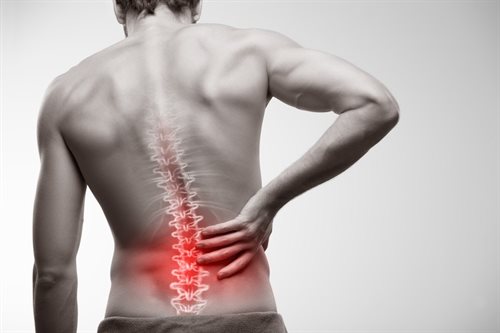Pain sensitivity in people with persistent low back pain

Full reference: Georgopoulos V, Akin-Akinyosoye K, Smith S, McWilliams DF, Hendrick P, Walsh DA. An observational study of centrally facilitated pain in individuals with chronic low back pain. Pain Rep. 2022 Apr 13;7(3):e1003. doi: 10.1097/PR9.0000000000001003. PMID: 35441119; PMCID: PMC9012603
Low back pain (LBP) is very common, can last for months or years, and can substantially impact on the quality of life of people who experience it as well as on healthcare services. Why does back pain last so long? One part of the reason is because of changes in how the brain and spinal cord (central nervous system) process information that come from the back. Such changes can lead to increased pain severity as well as to the development of fatigue, memory problems, anxiety and depression. The precise nature of these brain and spinal cord mechanisms are still incompletely understood.
Pain sensitivity can be measured using special equipment, such as pain pressure detector, questionnaires, and a body sketch where people can draw how widespread their pain is. From past projects with people with knee pain, we know that 8 unique characteristics measured using questionnaires are linked with pain sensitivity and pain severity. These 8 characteristics are anxiety, depression, nerve pain, fatigue, memory and thinking problems, widespread pain distribution, thinking the worst will happen and sleep disturbance. This suggests that the central nervous system (CNS) is involved in increased pain experience and worse treatment outcomes.
In this study, we invited 97 patients who were participating in a pain management programme to undergo pain sensitivity testing and answer questionnaires about pain sensitivity, overall pain experience, fatigue, sleep and mental health. Patients were assessed before their treatment and right after they completed it. We tested whether these 8 characteristics or pain sensitivity test results, associated with LBP in the same way as with knee pain.
We found that out of all pain sensitivity measures, the CNS mechanism we measured at the start of treatment by questionnaires was associated with high pain severity at the end of treatment. This suggests that if CNS mechanisms of pain sensitivity are better treated at an early stage, long term pain might be reduced. It also shows that cheap and easy-to-use questionnaires can be reliably used for the measurement of pain sensitivity.